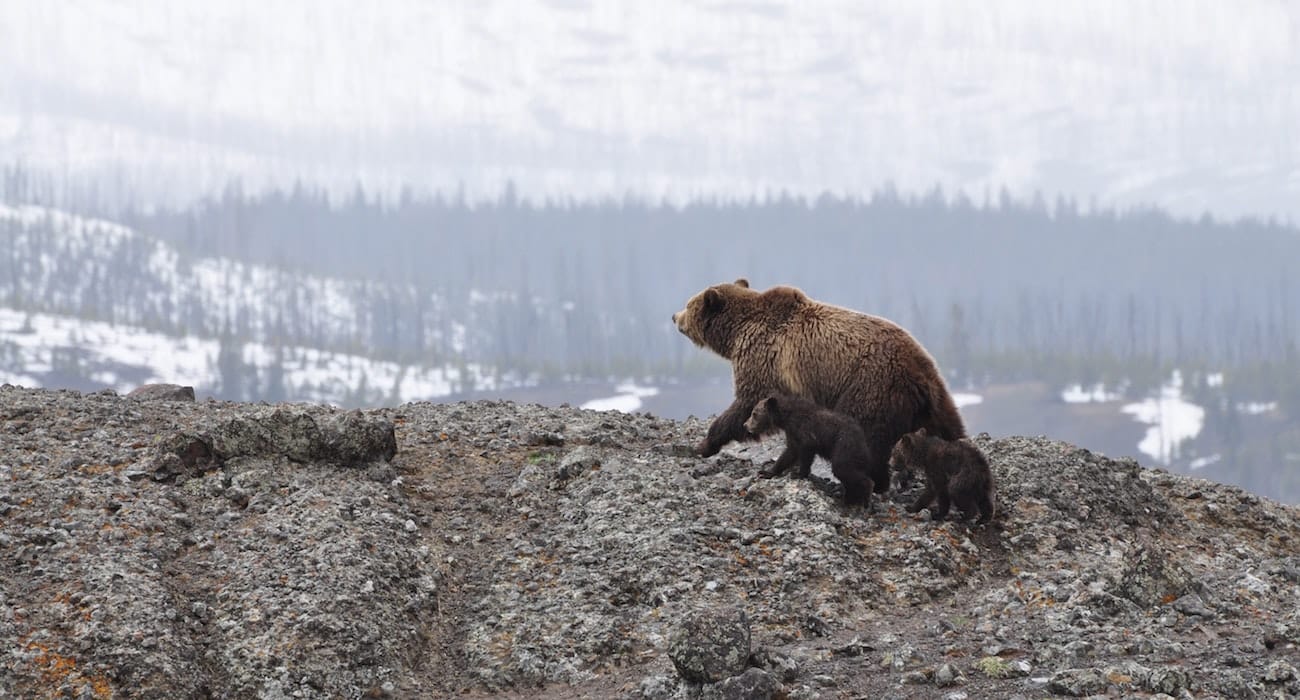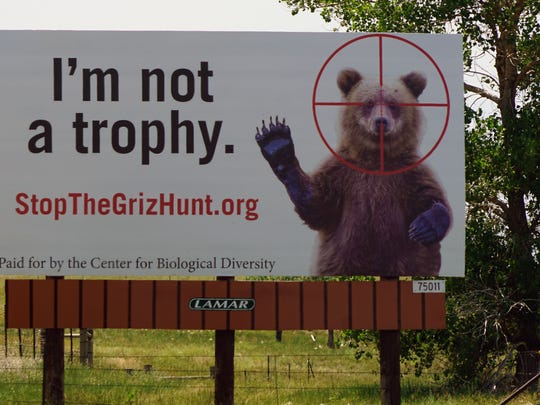Yellowstone Grizzly Bears Protected After Judge Bans Hunting

This well-intentioned effort harms bear restorations.
NOTE: this article was originally published to USAToday.com on September 24, 2018. It was written by Trevor Hughes.
The judge ruled U.S. Fish and Wildlife Service officials were “arbitrary and capricious” in their 2017 decision to remove the bears’ protections under the Endangered Species Act.
Overruling Trump administration officials, a federal judge in Montana has reinstated legal protections for grizzly bears living in and around Yellowstone National Park and blocked planned hunts in Wyoming and Idaho.
The judge ruled U.S. Fish and Wildlife Service officials were “arbitrary and capricious” in their 2017 decision to remove the bears’ protections under the Endangered Species Act.
The ruling represents a major victory for animal-rights groups that argued in a lawsuit that the estimated 700 bears living in the Greater Yellowstone area should be protected from hunting because there are so few of them left alive. Advocates argued the bears are both a key part of the local ecosystem and a major tourist attraction.

“The court’s ruling resonates with the feelings of countless Americans who believe in the protection of grizzly bears, and we’re as committed as ever to making sure that this celebrated population will be spared from the cruel and excessive trophy hunt planned by the states of Wyoming and Idaho,” said Kitty Block, acting president and CEO of the Humane Society of the United States.
Chief District Judge Dana L. Christensen ruled that removing the protections increased the risk of extinction. The United States is home to several geographically separated grizzly populations, and Christensen said the decision to de-list the Greater Yellowstone bears made it more likely the species across the country would become inbred and die off due to a lack of genetic diversity.
“By refusing to analyze the legal and functional impact of delisting on other continental grizzly populations, the service entirely failed to consider an issue of extreme importance,” Christensen wrote in his decision issued late Monday night. “Moreover, the service’s analysis of the threats faced by the Greater Yellowstone grizzly segment was arbitrary and capricious.”
This is the second time in a decade federal officials have tried and failed to remove protections from the bears, a top priority for many western lawmakers who believe hunters should be allowed to kill a small number of bears to reduce conflicts with backcountry users and protect livestock.
Wyoming officials had planned to let trophy hunters kill up to 22 bears this fall, although Christensen temporarily put that hunt on hold while he decided this case, along with a planned hunt for a single bear in Idaho. Wyoming wildlife officials didn’t immediately respond to a request for comment on his ruling, which blocks the hunt. Hunting advocates were considering their options Monday night.
Christensen’s decision came 10 days after a mother grizzly and her cub killed a hunting guide northeast of Jackson, Wyoming, which bear-hunting advocates said demonstrated the need to reduce the number of grizzlies in the area. Both bears involved in that attack were later killed by state wildlife officials.
The number of grizzlies living in the Greater Yellowstone area fell to as low as 136 in 1975, and the bears were among the first species granted protection under the Endangered Species Act.
When Lewis and Clark explored the West in the early 1800s, federal officials say, an estimated 50,000-100,000 grizzly bears roamed between the Pacific Ocean and the Great Plains. Today there’s only about 1,700 grizzlies in all of the Lower 48 states, federal officials say, primarily in Wyoming, Montana and Idaho. Alaska’s population of grizzlies is considered a distinct group.
“The Northern Cheyenne Nation views the grizzly bear as a relative entitled to our respect and protection from harm,” said Lawrence Killsback, president of the Northern Cheyenne Nation, one of the groups that brought the lawsuit. “We have a responsibility to speak for the bears, who cannot speak for themselves.”
In his ruling, Christensen acknowledged heated emotions on both sides but said it wasn’t his place to decide whether hunting is proper or whether grizzlies pose a danger to humans and livestock. His role, he said, was to decide whether Trump administration officials properly followed the law.
“These issues are not before the court,” Christensen said of ethics of hunting and the potential danger bears pose to people. “This court’s review, constrained by the Constitution and the laws enacted by Congress, is limited to answering a yes-or-no question.”
